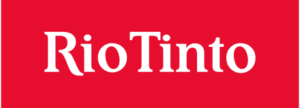
Rio Tinto
Finding better ways to get the materials we need
Rio Tinto seeks to find better ways to provide the materials the world needs. Iron ore for steel. Low carbon aluminium for electric cars and smartphones. Copper for wind turbines, electric cars and the pipes that bring water to our home. Borates that help crops grow and titanium for paint.
For centuries a site along the Rio Tinto in Huelva, Spain, has been mined for copper, silver, gold and other minerals. Around 3000 BC, Iberians and Tartessians began mining the site, followed by the Phoenicians, Greeks, Romans, Visigoths and Moors. After a period of abandonment, the mines were rediscovered in 1556 and the Spanish government began operating them once again in 1724.
However, Spain’s mining operations there were inefficient, and the government itself was otherwise distracted by political and financial crises, leading the government to sell the mines in 1873 at a price later determined to be well below actual value. Following purchase of the mine, a syndicate including Matheson and Deutsche Banks launched the Rio Tinto Company, in 1873. At the end of the 1880s, control of the firm passed to the Rothschild family, who increased the scale of its mining operations.
Today the Rio Tinto Group is an Anglo-Australian multinational company that is one of the world’s largest metals and mining company. Although primarily focused on extraction of minerals, it also has significant operations in refining, particularly the refining of bauxite and iron ore. It is based in London and Melbourne.
Rio Tinto;s purpose builds on a goal of over 150 years, “finding better ways to provide the materials the world needs.”
“We were at the forefront of automation – trucks, trains and drills – and remote operations in our industry. We’ve found better, lower carbon ways of producing materials like aluminium and copper. And we’ve introduced the world’s first sustainability label for aluminium using blockchain technology.
The need for innovation is greater than ever. The energy transition and continued urbanisation will require more of the materials that make these things possible, such as copper, aluminium, iron ore, lithium and minerals. If the materials that make renewable energy possible cause more harm in production than their products offset, nobody benefits. Much of the technology we need to get to net zero by 2050 doesn’t exist today, so we need to contribute, support and partner to make it a reality.
Breakthrough technologies also create opportunities for our business. For example, technology advances are helping our geologists to find new deposits, unlock previously economically unviable resources, and extending the life of existing assets. We’re also creating new products from waste. We became the first producer of scandium oxide in North America, using an innovative process we developed to extract high purity scandium oxide from waste streams without the need for any additional mining.”
Rio Tinto has embraced digitalization in various aspects of its operations. Here are some examples of Rio Tinto’s digitalization initiatives:
- Autonomous Haulage System (AHS): Rio Tinto has implemented an Autonomous Haulage System across its mining operations. Large autonomous trucks are used to transport ore and waste material, guided by GPS and advanced sensors. This technology improves safety, efficiency, and productivity by reducing the risk of accidents and enabling continuous operation.
- Remote Operations Centers: Rio Tinto operates Remote Operations Centers (ROCs) for its mines, which use advanced technologies such as artificial intelligence (AI), machine learning, and real-time data analytics. These ROCs monitor and control the mining operations remotely, allowing for optimized production planning, equipment maintenance, and resource allocation.
- Integrated Mine Planning and Optimization: Rio Tinto utilizes digital tools and software to integrate mine planning and optimization processes. These tools analyze various factors, such as geological data, resource availability, and market conditions, to optimize mine design, production scheduling, and material blending. This digital approach improves operational efficiency and maximizes resource utilization.
- Digital Twin Technology: Rio Tinto employs digital twin technology, which involves creating virtual replicas of physical assets or systems. Digital twins are used to simulate and analyze different scenarios, enabling predictive maintenance, optimizing equipment performance, and enhancing overall operational efficiency.
- Data Analytics and Predictive Maintenance: Rio Tinto utilizes data analytics and predictive maintenance algorithms to analyze large volumes of data collected from sensors and equipment. By monitoring the health and performance of machinery in real-time, potential equipment failures can be predicted, and maintenance activities can be scheduled proactively. This approach reduces downtime, lowers maintenance costs, and improves operational reliability.
- Robotics and Automation: Rio Tinto has implemented robotic and automated systems in its mining operations. Robots are used for tasks such as drilling, blasting, and rock sample analysis. Automation reduces human exposure to hazardous environments and enhances accuracy and productivity.
- Digital Supply Chain and Logistics: Rio Tinto employs digital solutions to optimize its supply chain and logistics operations. These solutions use real-time data to track and monitor shipments, optimize routes, and manage inventory levels, ensuring timely delivery of raw materials and reducing operational costs.
Rio Tinto’s digitalization efforts are aimed at improving safety, productivity, and sustainability in its mining operations. By embracing digital technologies, the company strives to optimize its processes, enhance decision-making, and create more efficient and sustainable mining practices.